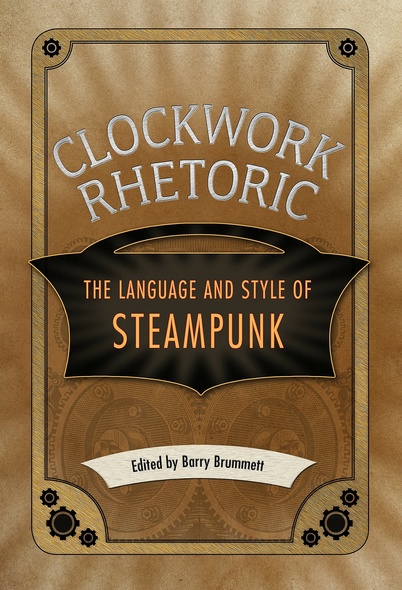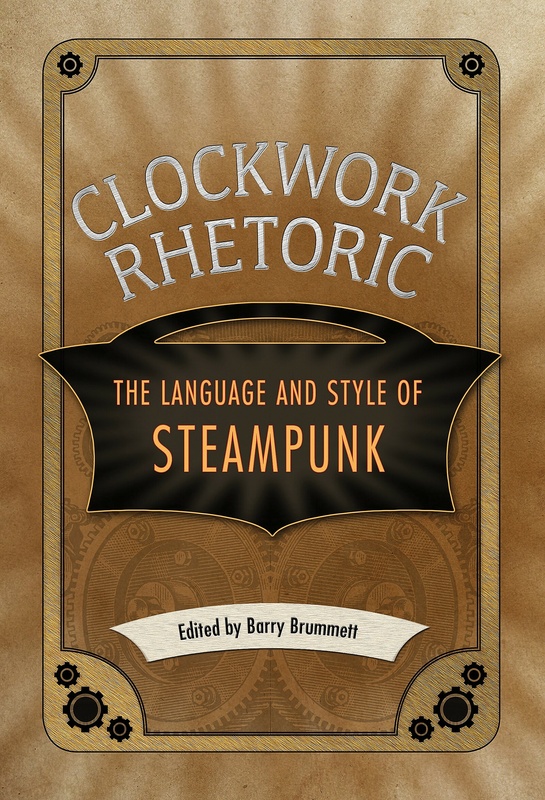
Clockwork Rhetoric
The Language and Style of Steampunk
This unique book explores how the aesthetic and cultural movement “Steampunk” persuades audiences and wins new acolytes. Steampunk is an aesthetic style grounded in the Victorian era, in clothing and accoutrements modeled on a heightened and hyper-extended age of steam. In addition to its modeling of attire and other symbolic trappings, what is most distinctive is its adherents’ use of a machined aesthetic based on steam engines and early electrical machinery—gears, pistons, shafts, wheels, induction motors, clockwork and so forth.
Precursors to steampunk can be found in the works of Jules Verne and H. G. Wells. The imagery of the American West contributed to the aesthetic—revolvers, locomotives, and rifles of the late nineteenth century. Among young people, steampunk has found common aesthetic cause with Goth style. Examples from literature and popular culture include William Gibson’s fiction, China Miéville’s novels, the classic film Metropolis, and the BBC series Doctor Who. This volume recognizes that steampunk, a unique popular culture phenomenon, presents a prime opportunity for rhetorical criticism.
Steampunk’s art, style, and narratives convey complex social and political meanings. Chapters in Clockwork Rhetoric explore topics ranging from jewelry to Japanese anime to contemporary imperialism to fashion. Throughout, the book demonstrates how language influences consumers of steampunk to hold certain social and political attitudes and commitments.
I enjoyed many of the essays in Clockwork Rhetoric, and they gave me fresh insight into the popular culture that steampunks reference, the symbols that are worn and displayed, and the histories steampunk explores. The importance of the power of the object and the way steampunks use their modes of dress as shorthand to communicate to others is thought provoking and made me consider the messages I may be giving out in my form of dress.
I loved the book! Clockwork Rhetoric is one of the finest evaluations yet written on steampunk style. The many contributors do an excellent job of establishing the myriad languages of steampunk (or is it only one?), from the seen aesthetics of fashion and film to its literary evaluations of the social and sexual. I found myself constantly rethinking the definition of Machine—both the ones we create physically as well as the ones we construct socially. Clockwork Rhetoric is a brilliant addition to an ever-evolving genre. More like this!
Barry Brummett is Charles Sapp Centennial Professor in Communication and chair of the Department of Communication Studies at the University of Texas at Austin. He is author of A Rhetoric of Style and Rhetorical Homologies: Form, Culture, Experience.





